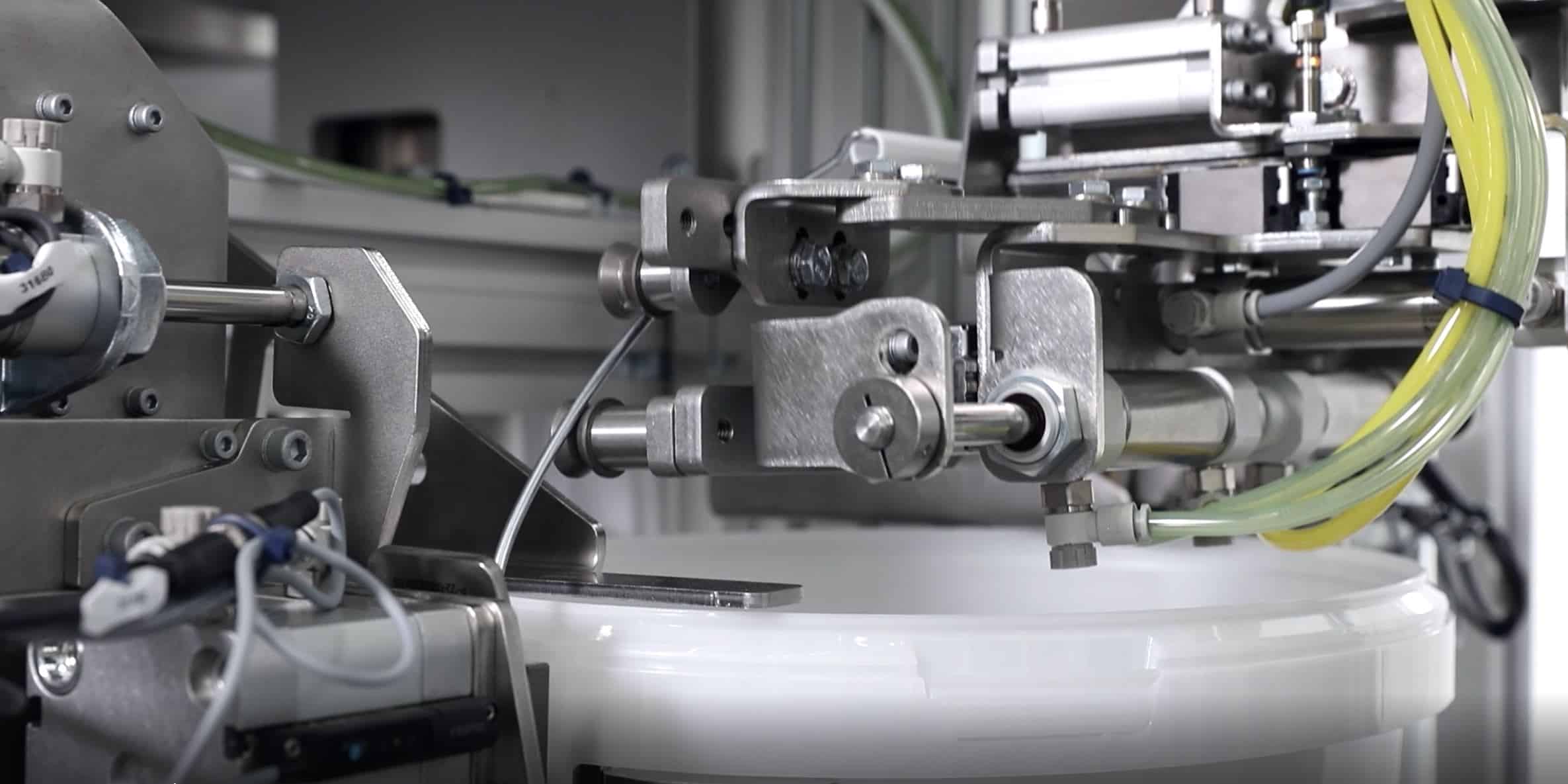The device has its own control system, making it self-operating.
The Bailer receives the buckets one at a time from the conveyor belt. Once they are in place, they must be aligned with the hole in the bracket. Additional features can be used for alignment if desired.
Individually, the unformed metal handles can be fed from a magazine, separated mechanically, and given a handle roll.

The grip rollers can be introduced into the system via spiral conveyor as a bulk feed. Nubs are created on the metal rod ends after the grip roll is pressed onto the ends.
The metal rod is then shaped into a handle by a forming plate and rollers.
The end position can be adjusted in real time via the HMI if necessary, and the shaping rollers can be moved and positioned along two servo axes for maximum flexibility. The handle is formed through a series of consecutive processes, each of which is completed at a different station.
Once the handles have been made entirely, they are transported to the conjunction station, where the bucket and handle are brought into exact alignment and the ends of the handle are forced into the holes.
Any form of bucket, from round to rectangular to square to oval, can be used with the Beck Bailer.
A metal handle can accommodate a wide range of bucket sizes, from around 2 litres to 40 litres in capacity. Bucket dimensions of 175 mm to 380 mm in diameter and 100 mm to 450 mm in height are suitable.
Specifications for the length and width of the bails that can be worked with are between 370mm and 645mm and 2.7mm and 4.0mm, respectively. One thousand and five hundred metal rods and five hundred grip rollers can be loaded into the Beck Bailer at once.

